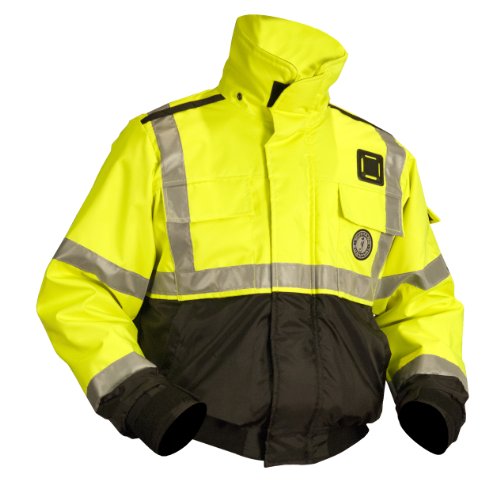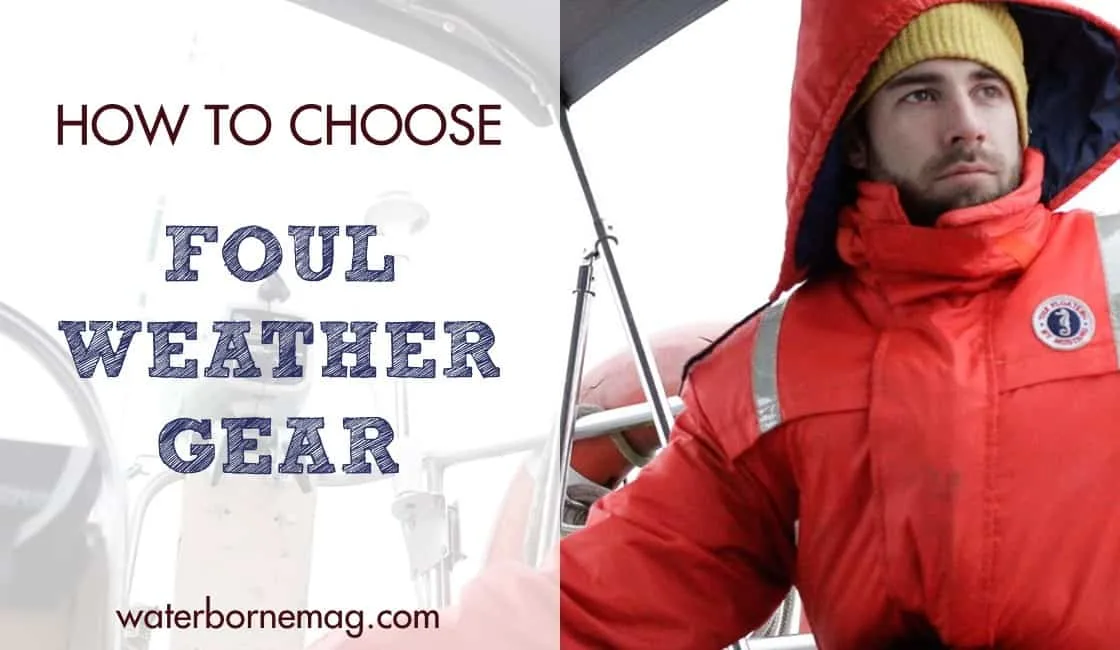
Foul weather gear is designed to do one thing: keep you dry on a sailboat. Simple, right? Until you go shopping for a suit and are immediately overwhelmed by the vast number of options, technical features, and specs – not to mention the price tags!
We’ve had the opportunity to sea trial various types of foul weather gear while sailing over 13,000 miles on our 35-foot sailboat. Read on for our guide to choosing the perfect set of foulies.
Note: This post contains affiliate links
5 types of foul weather gear
Whether you’re weekend cruising in Washington or offshore racing in the Southern Ocean, foul weather gear is an important piece of kit. However, the suit you choose largely depends on the type of sailing you’re doing.
Foul weather gear generally falls into one of five classes:
- Inshore
- Coastal
- Offshore
- Flotation
- Nonsailing waterproof outdoor gear
1. Inshore
Inshore gear is great for sailing in warmer climates, where you need something to block the wind, spray, and occasional rain showers. Its construction makes it comfortable and easy to move in.
Key features:
- Lightweight water-resistant or waterproof fabrics
- Highly versatile and can be used for onshore activities like hiking and biking
- Emphasis on comfort over more rigid/durable coastal and offshore suits
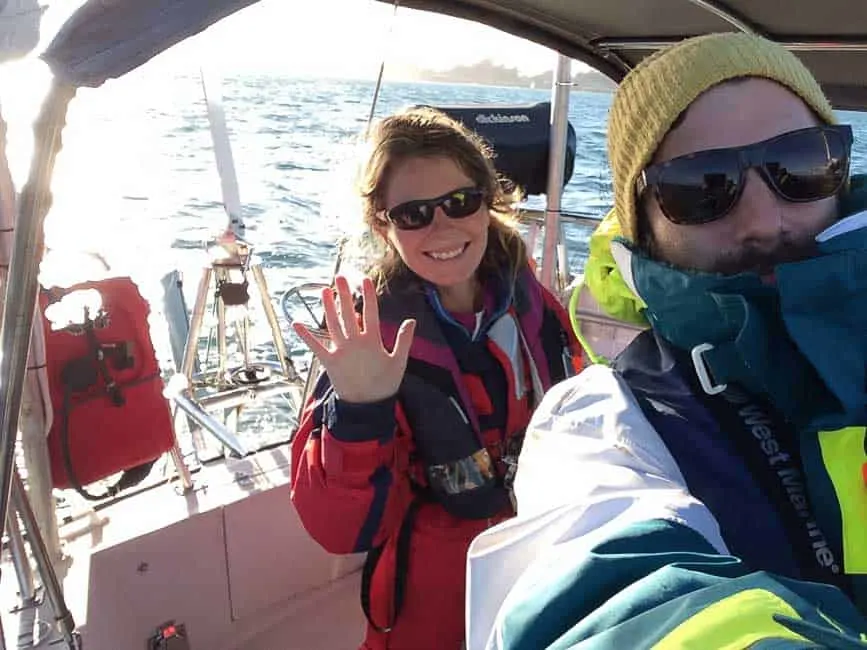
2. Coastal
Coastal gear is medium weight and versatile, good for anything from multiday cruises to carrying groceries down the dock in the rain. While not as tough sounding as its offshore cousin, coastal gear provides good value and mileage. I used a coastal Henri Lloyd set on an eight-day offshore passage down the US Pacific Coast and it kept me comfortable.
Key features:
- Medium-weight waterproof fabrics
- Reflective tape and high-vis colors
- Reinforced seats, knees
- Fleece lined pockets
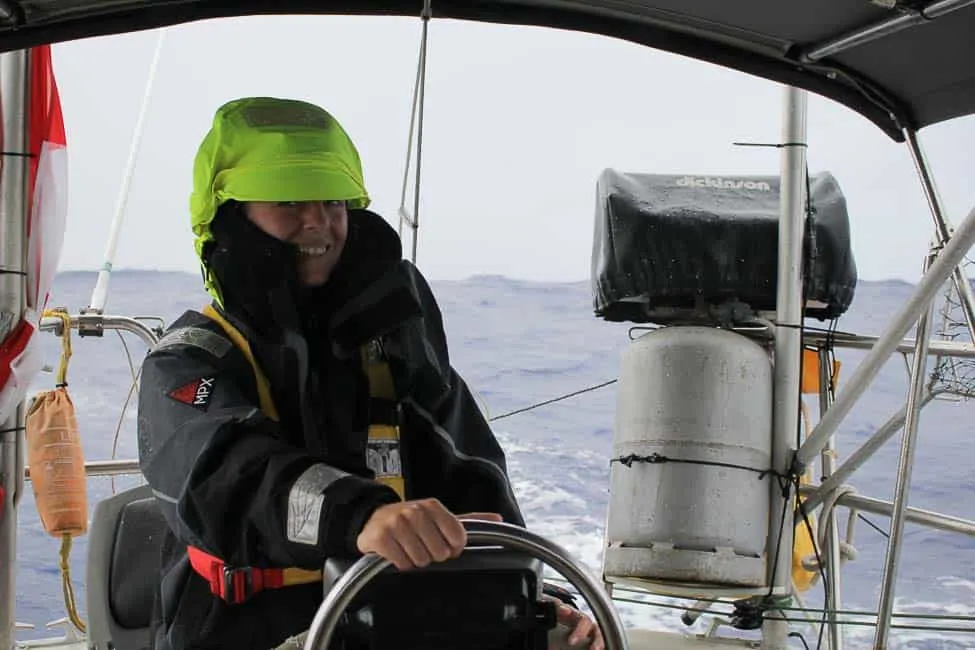
3. Offshore
Offshore foul weather gear is designed to withstand serious abuse at sea. It’s the go-to option for offshore racers and cruisers, sailors planning to spend weeks at a time in their two-piece. After two years of offshore cruising, I finally invested in a Musto offshore suit and I absolutely love the functionality and extra features. It’s definitely a luxury but when you’re spending weeks of every year at sea, it’s well worth it.
Key features:
- Heavy-duty and high-performance fabrics
- Integrated safety harness
- Reflective tape and high vis colors
- Reinforced seats, knees
- Tall collars
- Wrist seals
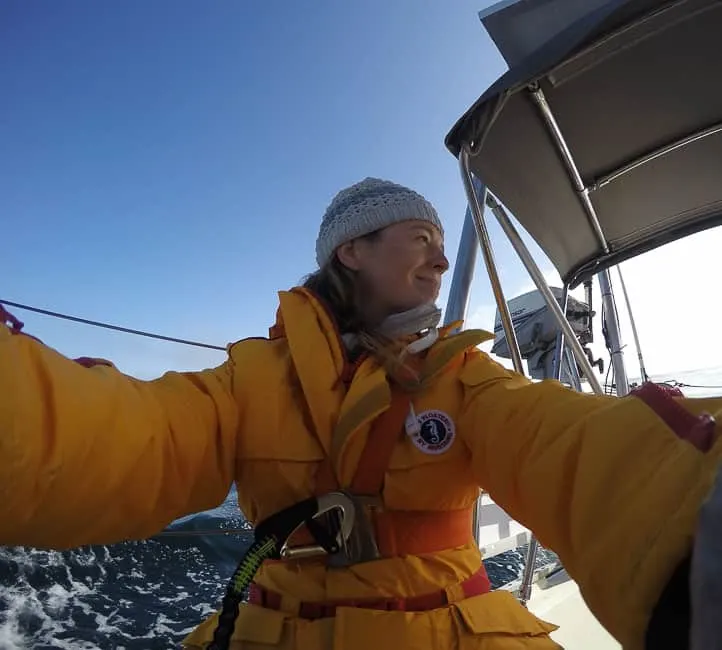
4. Float suit
Float suits are made from closed-cell foam, providing flotation and insulation in the event that you fall in. They’re commonly used in commercial settings but many recreational sailors swear by them. They’re bulky and don’t breathe very well, making them a poor choice for highly active sailing (i.e. racing).
Still, you can’t beat a float suit for cold weather. I bought an older Mustang Float suit at a thrift shop and lived in the thing when we circumnavigated Vancouver Island in the fall. It’s like wearing a sleeping bag all day, which suits me just fine!
Key features:
- Closed-cell foam provides buoyancy and warmth
- One-piece suit or jacket/pant combo
- Reflective tape and high-vis colors
- Reinforced seats and knees
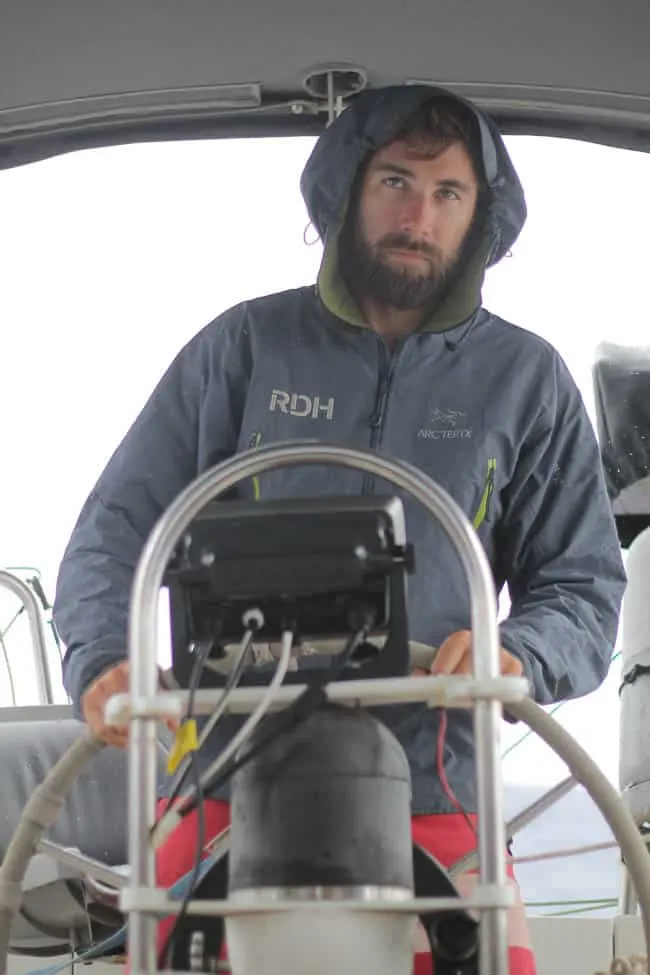
5. Nonsailing waterproof jacket
Do I really need foul weather gear? Can’t I just use my waterproof hiking jacket?
In many cases, yes. Some sailors wear waterproof jackets and pants designed for hiking, skiing, and mountaineering. While you won’t get sailing-specific features like wrist seals and high collars, a waterproof hiking jacket and pants should work just fine for a low-key weekend cruise or even for longer trips in hot climates.
For example, when I cruised in Mexico for a year, I used a lightweight GORE-TEX shell and pants designed for skiing. If you’re just getting into sailing and aren’t ready to invest in foulies, use the waterproof gear you have. After all, people used to go to sea in oilskins, which were basically sail cloth painted with linseed oil and wax!
Features to consider when shopping for foul weather gear
Fit
Foul weather gear is designed to have a roomier fit than other types of activewear and should leave you with plenty of freedom of movement and space for layers underneath.
Color
While traffic cone orange may not be your go-to hue, avoid more neutral tones like blue, gray and black. These colors will make you tricky to spot if you fall overboard. If you really can’t bear going with a high-vis suit, choose a jacket with a high-vis hood or alternatively keep a bright yellow swim cap tucked into your life jacket.
High-tech fabrics
Foul weather suits come in various levels of waterproofness, breathability, and durability. Your choice will depend on your local climate, the type of sailing your doing, and your activity level on the boat.
Reinforced knees and seats
From wrestling down a spinnaker on an anti-skid deck to endlessly snagging your clothes on hardware, the sailing environment is brutal on clothing . Offshore and coastal foul-weather gear have reinforced high abrasion areas for extra durability.
Heavy duty, noncorroding zippers
Sailing brands almost exclusively use noncorroding zippers. If you’re thinking of buying wet weather gear from a nonsailing specific brand, look for noncorroding zippers or expect frozen zips and a rusty mess.
Bibs
Coastal and offshore suits usually include bib pants. This is to avoid water rushing up your midsection. If you’re not planning on seeing green water over the deck you can find lightweight waist pant options.
Elasticated waists
Far from being about form or fashion, an elasticated waist helps prevent water from rushing up your suit.
Pockets, pockets, pockets
Foul-weather gear offers capacious pockets. Easily fit your rigging knife, phone, snacks, gloves and more.
Hoods
High-vis hoods with stiff brims are great for seeing and being seen!
Wrist seals
Wrist seals are rubber cuffs that prevent water from running up your sleeves.
Drop seat
Any offshore lady knows the annoyance of wrestling in and out of foul weather gear when nature calls in the middle of the night watch. Drop seats, which work much like a fly, are the solution!
We hope you’ve enjoyed our guide to choosing foul weather gear. Questions or thoughts? Let us know in the comment field below.
Fiona McGlynn is an award-winning boating writer who created Waterborne as a place to learn about living aboard and traveling the world by sailboat. She has written for boating magazines including BoatUS, SAIL, Cruising World, and Good Old Boat. She’s also a contributing editor at Good Old Boat and BoatUS Magazine. In 2017, Fiona and her husband completed a 3-year, 13,000-mile voyage from Vancouver to Mexico to Australia on their 35-foot sailboat.



